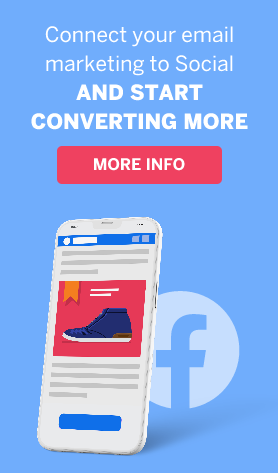How Do You Segment Contacts? Here’s how to email your contacts exactly what suits them
ActiveTrail’s email marketing platform, especially our automation system, allows you to send email and SMS campaigns according to your contacts’ groups and preferences, in short – by segmentation.
Segmentation, the division of your contacts into groups, is what allows you to email each contact with appropriate frequency and with content that interests them, and to target your audiences in the most effective way possible.
Segmentation can’t just be pulled out of thin air – it has to be based on something. In order to divide your contacts up into groups, you need a basis upon which to divide them. In our system, this basis could be a number of things.
Here are some recommended options for segmenting your contacts:
A contact’s action; opening an email
One of the simplest ways to filter your contacts is according to the opening of emails. If you have contacts who haven’t opened your emails in a month, while you’ve been sending emails at least once a week, it may be worthwhile to classify them in an “email once a month” group, and send them monthly, instead of weekly, emails.
If you have contacts who haven’t opened your emails in two months, you may want to put them in an “email once in two months” group and send them emails only bimonthly. If you have contacts who haven’t opened your emails in three months, it might be a good idea to stop emailing them, or alternatively to send them a special campaign.
Another type of contact classification according to email opening is for instance if you send an email about a specific subject or product. You can create a special group for contacts who opened the email about, let’s say “swan season”, and to keep sending emails only to them on the subject of “swans”.
A contact’s action; clicking on a link in a campaign
One of the best ways to find out what your contacts like is clicks on campaigns. According to a contact’s click on a specific link in a campaign, you can tell what she likes and what she prefers, and put her in a group accordingly.
Thus, for example, if you’re a travel agency that sends out sales on vacations that you offer around the world, and you want to focus your offers for the customers, you can create one email that includes offers for vacations in London, Paris, and Rome, with each offer having a link of its own. Make a trigger on each link, so that when a contact clicks on a specific link, let’s say the link to the London vacation offer, he’ll automatically be added to the group called “London”. That way, even if the contact doesn’t buy the London vacation you offered him this time, you can keep emailing him offers for vacations in London separately.
Another example is of a clothing store that offers sales for women and men with two different links. That way you can classify whoever clicks on the “deals for men” link in the men’s group, and whoever clicks on the “deals for women” link in the women’s group.
Thus, for example, you could make that kind of trigger on an email like the one sent by UNIQLO, the famous fashion house:
Contact fields in sign-up forms
One of the main means of categorizing contacts is contact fields on sign-up forms.
Using our contact fields, you can enter any value you like in the fields of your sign-up form, asking your contacts about any information you want to know.
These fields will later allow you to email your contacts according to their own preferences. We recommend asking your contacts about their preferences, rather than just getting dry facts from them.
Thus, for example, if you’re a shop that sells coupons and you want to send your contacts targeted offers on items that interest them, in your sign-up form you can ask them what they’re interested in.
Thus, for example, you can present them with a list of products and ask them to check off their main interests, for instance: clothing, shoes, vacations abroad, baby products, mobile devices. Every check on a field of interest will add the contact to the group with that field of interest. Thus, for instance, if someone checked “baby products”, he’ll be added to the “baby products” group. Afterwards you can prepare special emails that deal with sales on baby products and send them to precisely those contacts who are interested.
*Make sure you ask on the sign-up form about products in preferred fields, rather than asking general questions like “Do you have children?” A Google study showed that over 40% of baby product buyers don’t have children at all. You don’t want to lose customers.
Regular contact fields that businesses usually embed in their sign-up forms are anniversaries and birthdays. That way you can send coupons or special wishes to your contacts on their special days and stay in touch with them. But the possibilities for fields in sign-up forms are truly endless and you have the opportunity to get really creative here. This way you can design and send your contacts newsletters exactly according to what they like.
Divide your customers up into groups, invest in giving them what they like, and get love in return.
To find out how to add fields to sign-up forms, go to our updates article from February, where there’s a detailed guide on the subject.
To read more, go to our blog.



